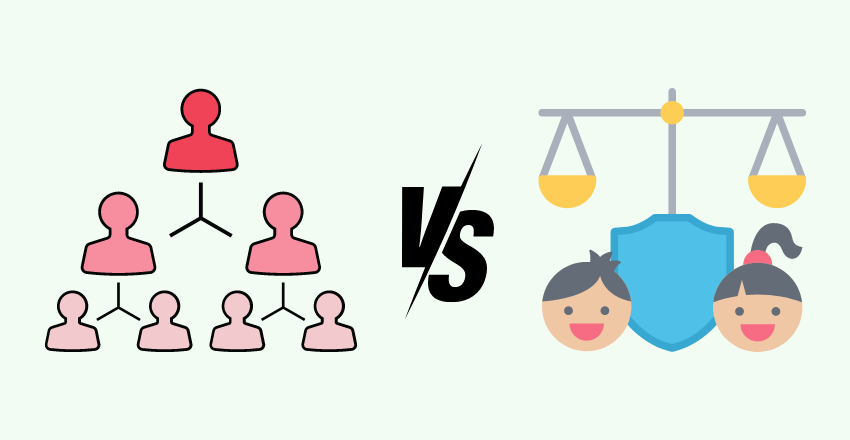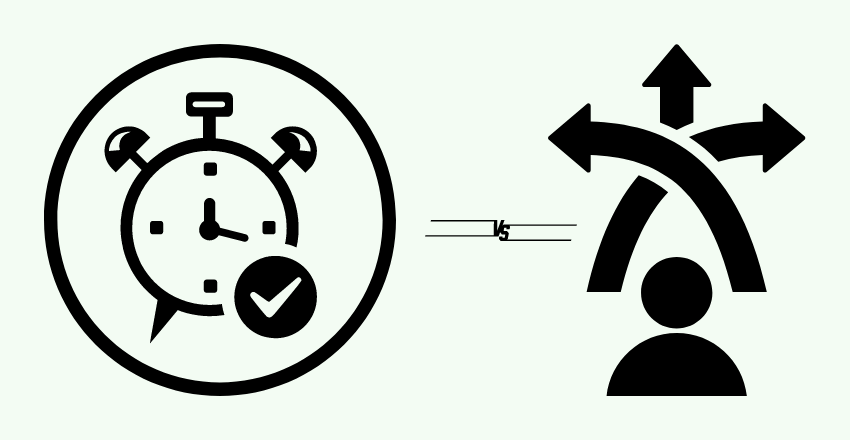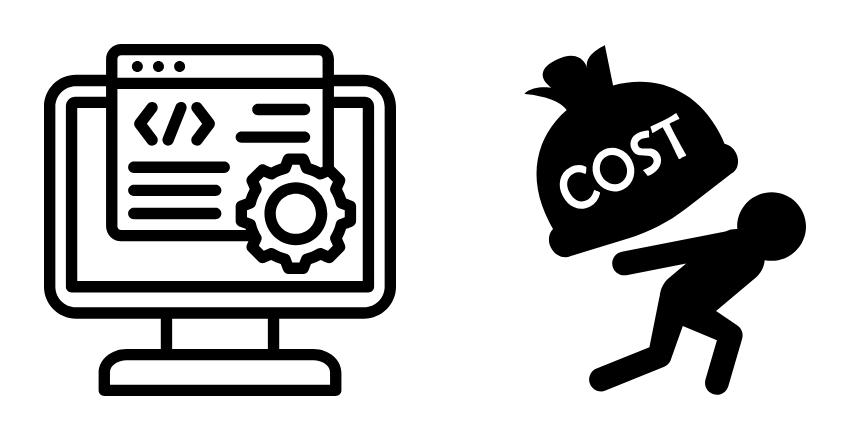Have you ever started a software development project feeling excited, only to see it fall apart for reasons you can’t explain? If you’re working with Brazilian developers, the problem might be something unexpected: cultural differences. These hidden issues can quietly damage communication, trust, and productivity. Let’s see how understanding and addressing these cultural differences can keep your project on track and successful.
The Unseen Barrier: Communication Styles
Imagine you’re in a meeting talking about project deadlines. You’re used to straightforward conversations where people give clear yes or no answers.
It’s like playing a game of chess where every move is direct and obvious.
But then, you’re working with a team of Brazilian developers. Their communication style is different. They prefer to keep things smooth and avoid conflicts.
Instead of saying a direct “no,” they might say “maybe” or “we’ll try.” This is more like playing a game of charades, where the answers are less direct and require more interpretation.
For example, you ask if a task can be completed by Friday. You’re expecting a simple “yes” or “no,” but instead, you hear, “We’ll do our best.” To you, this might sound like a positive response, so you think everything is on track. However, your Brazilian team members might actually be facing difficulties but don’t want to disappoint you with a direct “no.”
This difference in communication can cause problems. You might believe the project is progressing smoothly, while your team is silently struggling. It’s like driving a car and thinking you have a full tank of gas because the gauge is broken and stuck on full. You won’t realize there’s an issue until the car suddenly stops in the middle of the road.
To bridge this gap, it’s important to create an environment where everyone feels comfortable sharing their real thoughts and challenges. Encouraging open and honest communication can help ensure that everyone is on the same page.
Regular check-ins and clear questions can also help. Instead of asking, “Can you do this by Friday?” you might ask, “What obstacles might prevent us from meeting the Friday deadline?”
Understanding and adapting to these communication styles, you can prevent misunderstandings and keep your project running smoothly. It’s all about playing the same game, but learning the new rules to ensure everyone wins.
Hierarchy vs. Egalitarianism

In many Western workplaces, hierarchy is flexible. Imagine a workplace like an open stage where everyone, from the newest intern to the CEO, feels free to share their ideas and feedback. People can talk openly, and everyone’s opinion is valued.
It’s like a big brainstorming session where the best ideas can come from anyone.
But in Brazil, the situation is different. Here, respect for hierarchy is very important. Think of it like a traditional classroom, where students might hesitate to correct the teacher or speak up in front of the class. Junior developers in Brazil often hold back their concerns or suggestions when they are talking to senior staff. They might feel it’s not their place to speak up or fear it could be seen as disrespectful.
For example, let’s say there’s a junior developer in Brazil who notices a potential issue with the project’s code. In a more egalitarian culture, they might immediately bring it up in a meeting, confident that their input will be valued. But in a hierarchical culture like Brazil’s, they might stay silent, thinking it’s not their role to question the decisions of more senior colleagues. This silence can lead to problems festering, like a small crack in a dam that eventually leads to a flood.
To make sure your project doesn’t suffer from these hidden issues, it’s important to foster a culture where everyone feels comfortable speaking up, no matter their position. This could involve regular team meetings where everyone is explicitly encouraged to share their thoughts, or creating anonymous feedback channels where junior team members can voice their concerns without fear of judgment.
Consider using a suggestion box, either virtual or physical, where team members can submit their ideas or concerns anonymously. Or you could have regular “open floor” meetings where everyone is invited to share their thoughts on current projects.
Encouraging this open dialogue helps ensure that valuable insights aren’t missed and that potential problems are addressed early. It’s like maintaining a garden: if you don’t allow every plant to get the sunlight and water it needs, the whole garden suffers.
Making sure everyone on your team, regardless of rank, feels valued and heard, you create a healthier, more innovative, and more successful project environment.
Time Perception: Punctuality vs. Flexibility

In Western cultures, time is often seen as a straight line. Think of it like a train schedule: every minute is planned, and everything needs to run on time. People manage time very carefully, sticking strictly to deadlines and schedules. If a meeting is set for 10:00 AM, it starts exactly at 10:00 AM. If a project deadline is Friday, it means everything should be done by Friday without fail.
In Brazilian culture, however, time is more flexible. It’s like a river that flows naturally, not confined to strict schedules. Meetings might start a bit later than planned, and deadlines are seen as more flexible guidelines rather than rigid cutoffs. This difference can lead to frustration if not managed properly.
For instance, imagine you’ve set a project deadline for your team. You expect everything to be ready by that date because, for you, deadlines are non-negotiable. But your Brazilian colleagues see the deadline more as a target to aim for rather than a strict cutoff. They might deliver the project a few days later, which could be perfectly acceptable in their work culture but problematic in yours.
This difference in time perception can be like playing two different sports with the same ball: one team is playing soccer, expecting the game to move quickly with constant action, while the other team is playing baseball, where the pace is slower and there’s more time to strategize between plays. Both approaches are valid, but they operate on very different timelines.
To avoid confusion and frustration, it’s important to set clear expectations about timelines. Here are some tips to help bridge the gap:
- Agree on Deadlines: When setting deadlines, have an open discussion about what those deadlines mean. Make sure everyone understands whether they are strict cutoffs or more flexible targets.
- Regular Check-ins: Schedule regular progress meetings to keep everyone on track. This helps ensure that any delays or issues are addressed early, and adjustments can be made as needed.
- Build in Buffer Time: Allow for some extra time in your project schedules to accommodate any flexibility. This can help prevent last-minute rushes and reduce stress for everyone involved.
- Clear Communication: Be explicit about your time expectations. For example, if you need a report by a specific date, explain why that date is important and what the consequences are for missing it.
- Cultural Sensitivity: Understand that flexibility with time is a part of Brazilian culture and not a sign of disrespect or lack of commitment. Approach these differences with empathy and a willingness to find a middle ground.
Setting clear expectations and understanding each other’s views on time, you can create a smoother workflow. It’s like tuning a guitar: each string might be different, but when they are all adjusted properly, they create beautiful music together. Balancing punctuality and flexibility ensures your project progresses harmoniously, respecting both cultural approaches.
Building Relationships: The Key to Trust

In Brazil, business is built on personal relationships and trust. Think of it like planting a garden: you can’t just throw seeds on the ground and expect a bountiful harvest. You need to prepare the soil, water the plants, and nurture them to grow. Similarly, in Brazil, you need to build personal connections before jumping into tasks. Skipping this step can lead to mistrust and poor cooperation.
For instance, imagine starting a project with a Brazilian team. If you dive straight into work without getting to know your colleagues, they might feel like they’re just tools for the job, not valued team members. This can make them less likely to collaborate fully or share their best ideas.
Building these relationships doesn’t have to be complicated. It can be as simple as engaging in small talk at the start of meetings. Ask about their weekend, show interest in their family, or talk about shared interests like sports or hobbies. This might seem trivial, but it’s like watering a plant. These small acts of kindness and interest help build a strong foundation of trust.
For example, let’s say you’re leading a project meeting. Before diving into the agenda, take a few minutes to ask everyone how they’re doing. Share a bit about your own life, too. This creates a friendly atmosphere where people feel valued as individuals. It’s like starting a meal with appetizers before the main course – it warms everyone up and sets the stage for a productive discussion.
Another analogy is building a bridge. The work you do is the traffic that crosses it, but the trust and relationships are the pillars that hold the bridge up. Without strong pillars, the bridge won’t stand for long, no matter how well the traffic is managed.
Here are some practical steps to build these important relationships:
- Small Talk: Spend a few minutes at the beginning of meetings chatting about non-work topics. Ask about family, hobbies, or recent events.
- Shared Meals: If possible, share meals together. This is a great way to bond. Even virtual coffee breaks can help if you’re working remotely.
- Celebrate Milestones: Recognize and celebrate personal and professional milestones like birthdays, anniversaries, or project completions.
- Show Genuine Interest: Take an interest in their lives outside of work. Remember details about their family or interests and follow up on them.
- Regular Check-Ins: Have regular, informal check-ins with your team members to show you care about their well-being and not just their work output.
Building these relationships makes your team stronger and more cohesive. It’s like creating a team of superheroes – individually strong, but unbeatable when they trust and understand each other. This trust translates into better cooperation, more creativity, and a smoother project workflow.
Bridging the Cultural Divide
Now that we’ve spotted these cultural misalignments, how can we bridge the gap and ensure your project thrives? Here’s a step-by-step guide using simple strategies and examples:
1. Cultural Sensitivity Training
Think of this as learning a new language. Just like you’d learn French to communicate better in Paris, cultural sensitivity training helps your team understand and appreciate cultural differences. These sessions can teach you about Brazilian communication styles, work ethics, and social norms. This understanding fosters empathy and smoother interactions. For instance, if your team knows that Brazilians value indirect communication, they’ll be more patient and open during discussions.
2. Clear Communication Guidelines
Imagine you’re on a road trip with friends. Without a map or agreed-upon route, you’d end up lost and frustrated. The same goes for communication in a project. Establish clear guidelines that consider both direct and indirect styles. For example, set rules for meetings where everyone gets a chance to speak and clarify points. Encourage open dialogue by creating a safe environment where team members feel comfortable expressing their thoughts without fear of judgment.
3. Flexibility with Hierarchy
Think of your team like a basketball team. The coach (senior staff) makes the strategy, but everyone, including the new players (junior staff), can suggest plays. Encourage junior members to share their ideas and feedback. Implement regular check-ins where everyone can speak up, and consider anonymous feedback mechanisms if people are shy. This openness can lead to innovative solutions and prevent problems from being overlooked.
4. Set Realistic Timelines
Setting project timelines is like planning a marathon. You need to respect both the fast runners (punctual cultures) and those who need a slower pace (flexible cultures). Agree on timelines that everyone can realistically meet. Regularly review progress and be prepared to adjust deadlines if needed. This flexibility helps accommodate different time perceptions and keeps the project on track.
5. Build Personal Connections
Building relationships is like nurturing a plant. It takes time and care, but the results are worth it. Spend time getting to know your Brazilian colleagues. Engage in small talk, share meals, or organize team-building activities. For example, you could start meetings with a quick chat about everyone’s weekend plans or celebrate birthdays and project milestones together. These informal interactions build trust and strengthen cooperation.
Putting It All Together
Let’s imagine a scenario where you’re leading a project with a Brazilian team. Here’s how you might apply these strategies:
- Cultural Sensitivity Training: Kick off the project with a training session where everyone learns about Brazilian work culture.
- Clear Communication Guidelines: Establish that meetings will start with everyone sharing updates, and set rules for clarifying points to avoid misunderstandings.
- Flexibility with Hierarchy: Have regular check-ins where junior members can anonymously submit feedback if they’re hesitant to speak up.
- Set Realistic Timelines: When planning the project timeline, discuss and agree on deadlines that consider both strict and flexible time views.
- Build Personal Connections: Start each meeting with a few minutes of casual conversation and organize monthly virtual coffee breaks or team lunches.
Bridging the cultural divide in these ways, you’ll create a more harmonious and productive work environment. It’s like building a well-tuned orchestra: each musician might play differently, but together they create beautiful music. With these strategies, your project can thrive, benefiting from the unique strengths each team member brings to the table.














